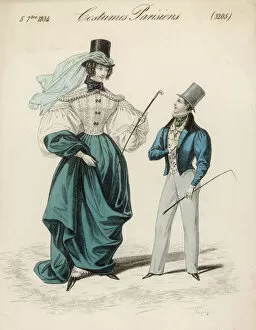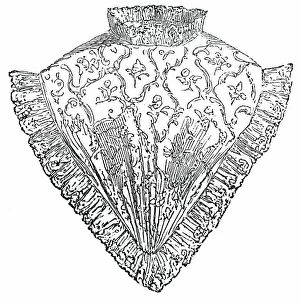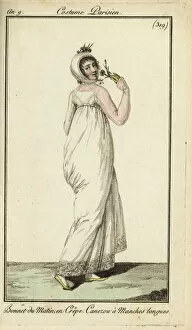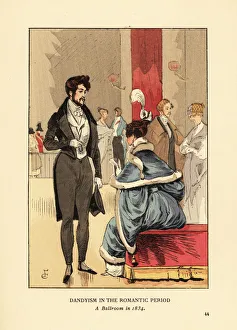Canezou Collection
"Canezou: A Fashionable Journey through Time" Step into the world of fashion and elegance as we explore the captivating history of the "canezou
All Professionally Made to Order for Quick Shipping
"Canezou: A Fashionable Journey through Time" Step into the world of fashion and elegance as we explore the captivating history of the "canezou. " From its origins in the early 19th century to its influence on riding habits, ball gowns, and everyday attire, this garment has left an indelible mark on the world of style. In 1801, a fashionable woman adorned herself with a crepe morning bonnet and donned a canezou decorated with delicate lace. The handcoloured copperplate engraving captures her grace and sophistication, showcasing how this versatile piece could elevate any ensemble. Paris in 1834 was abuzz with excitement as couples twirled across ballrooms wearing their finest attire. Among them stood a couple exuding charm and refinement. The lady wore an oblong headdress paired with a tiered skirt and velvet jacket – all complemented by her exquisite canezou. It was clear that she embraced both tradition and innovation in her fashion choices. Meanwhile, another fashionable woman caught everyone's attention at the Square of the Invalides in 1835. Her Levantine hat added an exotic touch to her ensemble while she confidently sported a canezou that showcased her impeccable taste. This litho from 1898 immortalizes not only her outfit but also the spirit of Parisian fashion during that era. The allure of canezous extended beyond high society events; they were also incorporated into riding habits for women who enjoyed equestrian pursuits. In "Riding Habits 1834, " we witness how these garments seamlessly blended functionality with style – allowing women to express their love for horses without compromising their elegance. Fast forward to Surplice and Canezou from 1845-1871; this iconic image captured by artists in1911 showcases how even clergymen found inspiration from this timeless garment. Its versatility knew no bounds, transcending social classes and professions.














